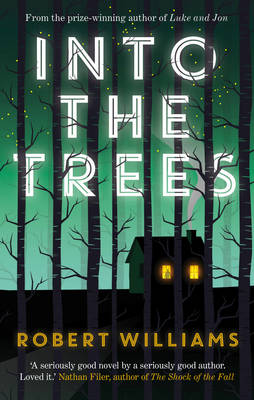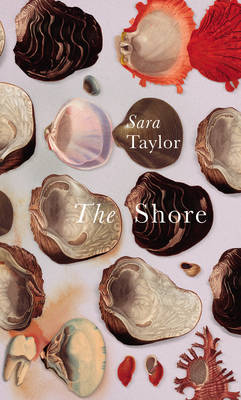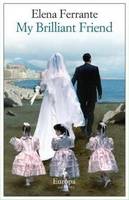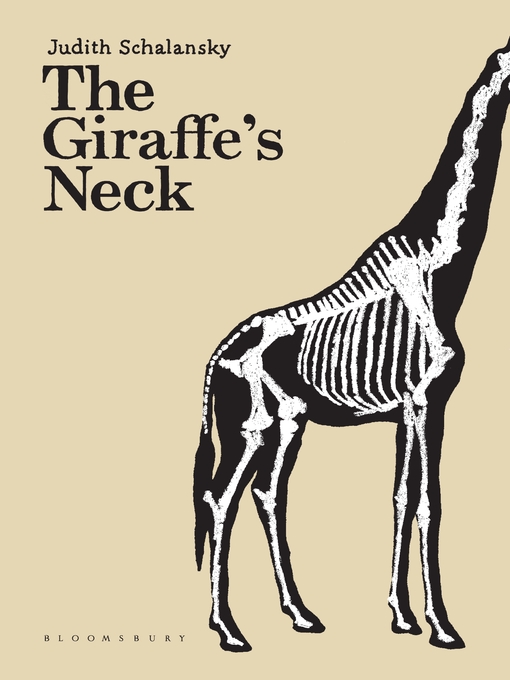It has been quieter on here lately than I would have liked. I was hoping to devote a bit more time to blogging in December, but unfortunately life has intervened again and I have to concentrate on other things instead. I will definitely do a full end-of-year countdown, but otherwise it’ll probably be short round-up posts for now.
Category: Uncategorized
And Other Stories giveaway winner
Thank you to everyone who entered my competition to win an And Other Stories subscription. One random selection later, and we have our winner: congratulations to Jenny – I hope you enjoy your books!
Five years of And Other Stories – and your chance to win a subscription!
If you’ve read this blog for a while, or you follow me on social media, you will probably know that I’m a big fan of the publisher And Other Stories. I love that they champion adventurous writing; and I always know that I’m going to be engaged when I read one of their books. More than that: I’m now a reader who gravitates habitually towards works in translation, and AOS titles have played a key part in that evolution.
I received a letter from And Other Stories the other day, telling me that it was five years since they published their first title, Down the Rabbit Hole by Juan Pablo Villalobos (tr. Rosalind Harvey). Five years! In some ways, it seems that hardly any time at all has passed. Then again, AOS are so much a part of the landscape that it feels as though they’ve always been there.
Anyway, included with this letter were two gifts for long-time AOS subscribers like me. One was a limited-edition Down the Rabbit Hole mug (these are also available to buy here). The other was the chance to nominate someone to receive an And Other Stories gift subscription. I want to give that subscription to one of my blog readers.
The prize is a four-book subscription if you are based in the UK, or a two-book subscription if you’re outside the UK. If you’d like to enter, just leave a comment on this post. I will accept entries up to 23.59 UK time on Friday 9 December. I will then choose a winner at random; if you win, I will contact you by email and ask for your postal address, which I’ll give to And Other Stories. Your details will not be used for any other purpose.
Good luck!
Robert Williams, Into the Trees (2014)
 It begins with a knock on the door: Harriet Norton answers to find four masked men, who want a word with her father. We move back eight years, when Thomas and Ann Norton move to their secluded barn conversion in the forest, purely because it seems to be the only place where baby Harriet doesn’t cry. This is a nicely handled opening by Robert Williams: it evokes the characters’ mixed emotions (a combination of guilt at doing this, and resignation that something had to be done). It sets a theme of decisions being taken at a particular moment, and going to have longer-term consequences. And it throws the reader off balance, because it’s a tragicomic situation following that dramatic prologue.
It begins with a knock on the door: Harriet Norton answers to find four masked men, who want a word with her father. We move back eight years, when Thomas and Ann Norton move to their secluded barn conversion in the forest, purely because it seems to be the only place where baby Harriet doesn’t cry. This is a nicely handled opening by Robert Williams: it evokes the characters’ mixed emotions (a combination of guilt at doing this, and resignation that something had to be done). It sets a theme of decisions being taken at a particular moment, and going to have longer-term consequences. And it throws the reader off balance, because it’s a tragicomic situation following that dramatic prologue.
We may then expect (which is to say, I expected) Into the Trees to start working towards that confrontation with the masked men. This it does, but more quickly than I anticipated, so the actual confrontation plays out about a third of the way in. For the whole of that first third, I had the wonderful sense (rarer than one might imagine) of not knowing at all where the book might head.
It settled down eventually into a thoughtful exploration of the personal consequences of such a dramatic event. Besides the Nortons, Williams’ other key characters are Raymond Farren, a misfit farm labourer who becomes friends (of sorts) with Thomas; and Raymond’s neighbour Keith Sullivan, who feels short-changed by life and is determined to set things right. Each protagonist is challenged by the novel’s events: Thomas is shaken by the thought that he can’t protect his family, which puts strain on his relationship with Ann; Raymond finds the stability in his life under threat; Keith may get what he wants, but struggles to hold on to it. All in all, Into the Trees is engaging stuff; thanks to Ray Robinson for bringing it to my attention.
Sara Taylor, The Shore (2015): Shiny New Books review
 There’s a new issue of Shiny New Books in the world, and it includes my review of The Shore, the debut novel by Sara Taylor. The Shore is set on a small group of islands off the coast of Virginia, and focuses on the members of two families over a span of 350 years (reaching into both the past and future). The chapters are arranged non-chronologically, meaning that the reader has gradually to piece together the complex picture of family secrets that emerges.
There’s a new issue of Shiny New Books in the world, and it includes my review of The Shore, the debut novel by Sara Taylor. The Shore is set on a small group of islands off the coast of Virginia, and focuses on the members of two families over a span of 350 years (reaching into both the past and future). The chapters are arranged non-chronologically, meaning that the reader has gradually to piece together the complex picture of family secrets that emerges.
You can read my review in full here.
Reflections: reading through a doorway, reading through a hole
 I have an on-off relationship with my ereader. I’m not particularly averse to electronic reading; it’s just that I rarely think to pick the ereader up when all the shelves of print books are so much more visible. I still prefer paper books at heart; indeed, very few of the ebooks I own are titles that I could also have bought as a print copy.
I have an on-off relationship with my ereader. I’m not particularly averse to electronic reading; it’s just that I rarely think to pick the ereader up when all the shelves of print books are so much more visible. I still prefer paper books at heart; indeed, very few of the ebooks I own are titles that I could also have bought as a print copy.
One of those few is Nathan Filer’s The Shock of the Fall, which I’ve been re-reading for my book group. I’d forgotten how much I liked it – the way it creeps up on you, gradually revealing that its form and narrator are not as they first appeared to be. I had put that forgetting down to not having read Shock until after it became a Big Name Book and somehow subconsciously (erroneously) assuming that meant it couldn’t be good, even though I remembered otherwise. But I also wonder if the experience of reading the book electronically didn’t have something to do with it.
“A book…is a doorway,” wrote Eleanor Catton recently. Her metaphor was more general, and made in a different context; but let’s run with the specifics of it for a while. When I open a print book, it is like stepping through a doorway, into the world of the book. Whatever distractions there may be from outside, it is ultimately just me and the book, and I have the whole text – its whole world – before me.
Catton goes on: “A screen is all surface. How many adults can sit at a computer terminal and read diligently and immersively, for hours?” It’s worth pointing out that, these days, such electronic reading is less likely to be done on a terminal than on something like a tablet or phone. But I think she does have a point here, because I find that, when I try to read on a multifunction device, I don’t have the same level of focus. After all, in those circumstances, reading is just one function among many.
I would distinguish, though, between multifunction devices and dedicated ereaders. With an ereader, it is still just me and the book, but the experience is different. If reading a print book is like opening a door, using an ereader to me is like peering through a hole. With a printed text, I can feel that I have the whole book in my hands. With the ereader, I have a single page (or page fragment) in front of me at any one time; I can’t flick so easily back and forth through the book; and an electronic page or percentage count give me a less intuitive sense of where I am in the book than holding a physical volume.
The effect of this is that, with ebooks, I find myself focusing much more on the isolated moment, less so on the context. It may be no coincidence that the only book read electronically that I’ve reviewed on this blog at any length is Paul Kingsnorth’s The Wake, a novel that demands – and rewards – attention to and engagement with its language, which is something that reading in the moment can encourage. On the other hand, The Shock of the Fall, which takes you through different texts and styles, rewards an appreciation of its cumulative effect. I appreciated Filer’s novel well enough on the electronic page, but perhaps I would have experienced it better on the printed one.
My January in Japan 2015 index
Happy New Year! Here’s hoping for a year of interesting and exciting books.
To kick things off, I’m joining in with January in Japan, the annual blog event hosted by Tony of Tony’s Reading List. I took part in this a couple of years ago, borrowed a load of Japanese books from the library, and didn’t get around to nearly as many as I’d hoped. Last year I was finding my feet more generally with translated fiction; but I’m back for this January, hopefully with more realistic plans. I’ve picked out a few Japanese books from my shelves, which I should get the chance to read and blog (along with the two January in Japan group reads).
I’ll be using this post as an index for my January in Japan blogging. In the meantime, I’d be interested to hear about your favourite Japanese books and writers in the comments.
***
1. Audition by Ryu Murakami
2. Manazuru by Hiromi Kawakami
Reading round-up: early December
Catching up on some of the books I’ve been reading lately…
 Elena Ferrante, My Brilliant Friend (2012)
Elena Ferrante, My Brilliant Friend (2012)
Translated from the Italian by Ann Goldstein
This is the first of the Neapolitan novels by Elena Ferrante (a pseudonym; the author’s true identity remains unrevealed), chronicling the lives of two friends: Elena Greco and Lila Cerullo. My Brilliant Friend follows the two girls through to their mid-teens in the 1950s; it captures the complexity and uncertainty of childhood friendships. Elena (the narrator) is by turns drawn to Lila and intimidated by her. Lila (whose viewpoint we never witness) remains a mysterious figure, moving towards Elena, then away, taking unexpected paths in life and love. The girls’ story is played out against the background of Naples at a point of change, and with the desire to escape their poor neighbourhood, ready or not. It’s an intriguing start to Ferrante’s series.
My Brilliant Friend is published by Europa Editions.
Tore Renberg, See You Tomorrow (2013)
Translated from the Norwegian by Seán Kinsella (2014)
This hefty (550-page) novel chronicles three days in the lives of a varied cast of characters, including Pål, a civil servant mired in debt; his daughters; some of their friends and acquaintances; and the gangsters whom Pål has turned to in the hope of resolving his situation. Renberg creates a web of almost a dozen viewpoint characters, many with secrets to guard. See You Tomorrow feels to me a little too long for the story it’s telling; but it’s testament to Renberg’s skill that he manages such a large cast of characters and keeps up no small amount of momentum.
See You Tomorrow is published by Arcadia Books.
Judith Schalansky, The Giraffe’s Neck (2011)
Translated from the German by Shaun Whiteside (2014)
In a school in the former East Germany, Inge Lohmark surveys her new class. She thinks she has the measure of them; indeed, she thinks she has the measure of most things. Lohmark’s worldview is informed by the biology that she teaches, and can come across as cold (she has little time for her colleague’s more informal, friendly approach to teaching, for example). But what The Giraffe’s Neck reveals is a character trying to hang on to what she has as the world changes around her. By novel’s end, we start to see through Lohmark’s façade, as she realises that perhaps even she must evolve.
The Giraffe’s Neck is published by Bloomsbury Books.
Andreas Maier, The Room (2010)
Translated from the German by Jamie Lee Searle (2014)
The Room is a fictionalised study of Andreas Maier’s Uncle J. Exactly what might be fictional, and what real, becomes something of a moot point in the face of such a larger-than-life character as J – he’s smelly, prose to outbursts of temper, forever tinkering away at the machines in his room. Maier’s portrait of Uncle J can hardly be called sympathetic; but perhaps there is ultimately some light in this tale of a man and his place in a small community.
The Room is published by Frisch & Co.
Chuck Palahniuk, Survivor (1999)
This was a book group choice, and my first Palahniuk novel. Over the past year-and-a-bit, the book group has given me my first experience of Dave Eggers and A.M. Homes, neither of which I particularly enjoyed. Reading Palahniuk was better, but still left me feeling frustrated. Survivor concerns one Tender Branson, whom we first meet as he’s recording his story into the black box of a crashing aeroplane. Branson is the last survivor of a death cult, which led him to become quite the media concern. I appreciate how Palahniuk underlines the superficiality of the celebrity machine (fifteen years on, it feels right on the money in many ways). But I got annoyed that this ostensibly spoken text was peppered with repeated phrases that felt more like self-consciously ‘literary’ writing. I suspect I’m becoming more attentive to the prose of what I read, and reactions like this may be the price to pay for that.
Survivor is published by Vintage Books.
Open thread: the books that changed you
Following on from my Fiction Uncovered article about how I’ve changed as a reader in recent years, I thought I would open the subject to you. Please leave a comment and tell me about a book that changed the way you read. Is there a book that put you on to a different kind of (non-)fiction? One that you returned to after abandoning and that suddenly ‘clicked’? Something else? Let me know!
Women in Translation Month: an index of reviews so far
During August, the blogger Biblibio is hosting Women in Translation Month. I’ve been making plans to join in, and aim to have at least four reviews up over the course of the month. But I wanted to start by bringing together all my previous reviews of books in translation by women. I expected that there wouldn’t be many, but it’s still quite sobering to see that there are only 26 from the five-and-a-half years of this blog (I know I haven’t been paying particular attention to books in translation until the last couple of years, but still…).
Anyway: long and short, positive and negative, here they all are…
***
Tamara Astafieva, Born in Siberia (translated from the Russian by Luba Ioffe)
Maria Barbal, Stone in a Landslide (translated from the Catalan by Laura McGloughlin and Paul Mitchell)For #WIT
Alina Bronsky, The Hottest Dishes of the Tartar Cuisine (translated from the German by Tim Mohr)
Kristina Carlson, Mr Darwin’s Gardener (translated from the Finnish by Emily Jeremiah and Fleur Jeremiah)
Laurence Cossé, A Novel Bookstore (translated from the French by Alison Anderson)
Viola Di Grado, 70% Acrylic 30% Wool (translated from the Italian by Michael Reynolds)
Elvira Dones, Sworn Virgin (translated from the Italian by Clarissa Botsford)
Hélène Grémillon, The Confidant (translated from the French by Alison Anderson)
Katharina Hagena, The Taste of Apple Seeds (translated from the German by Jamie Bulloch)
Marlen Haushofer, The Wall (translated from the German by Shaun Whiteside)
Pia Juul, The Murder of Halland (translated from the Danish by Martin Aitken)
Natsuo Kirino, The Goddess Chronicle (translated from the Japanese by Rebecca Copeland)
Natsuo Kirino, Out (translated from the Japanese by Stephen Snyder)
Hanna Krall, Chasing the King of Hearts (translated from the Polish by Philip Boehm)
Rosa Montero, Tears in Rain (translated from the Spanish by Lilit Žekulin Thwaites)
Yoko Ogawa, Hotel Iris (translated from the Japanese by Stephen Snyder)
Yoko Ogawa, The Diving Pool (translated from the Japanese by Stephen Snyder)
Yoko Ogawa, Revenge (translated from the Japanese by Stephen Snyder)
Véronique Olmi, Beside the Sea (translated from the French by Adriana Hunter)
Susann Pásztor, A Fabulous Liar (translated from the German by Shaun Whiteside)
Maryam Sachs, The Passenger (translated by Gael Schmidt-Cléach)
Simona Sparaco, About Time (translated from the Italian by Howard Curtis)
Birgit Vanderbeke, The Mussel Feast (translated from the German by Jamie Bulloch)
Alissa Walser, Mesmerized (translated from the German by Jamie Bulloch)
Juli Zeh, Decompression (translated from the German by John Cullen)
Alice Zeniter, Take This Man (translated from the French by Alison Anderson)


Recent Comments